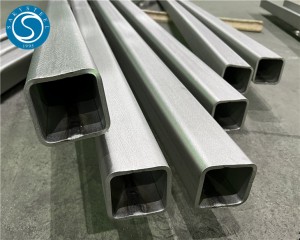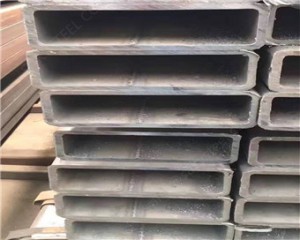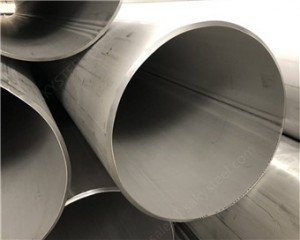What is Hollow Structural Sections?
Hollow Structural Sections (HSS) represent a class of metal profiles typically crafted from cold-rolled steel, shaped into tubular configurations. This distinctive form results in an open, unfilled edge running along the entire length of the steel bar, earning them the alternative monikers “box section” and “hollow section.” The adoption of HSS has surged significantly owing to its malleable form, versatility, and robust structural integrity, making it particularly conducive to inventive and forward-thinking design concepts.
Types of Hollow Structural Sections:
Hollow Structural Sections are commonly available in three primary configurations: rectangular hollow sections (RHS), square hollow sections (SHS), and circular hollow sections (CHS). Each variant of hollow section offers distinct advantages, properties, and applications.
1.Square Hollow Sections (SHS):
SHS have a square cross-section and are often used in the construction of structures where square shapes are preferred or required. They are commonly employed in building frames, support columns, and other architectural applications.
2.Rectangular Hollow Sections (RHS):
RHS have a rectangular cross-section and are utilized in situations where a rectangular shape is more suitable. Similar to SHS, RHS is commonly used in building and construction for structural components.
3.Circular Hollow Sections (CHS):
CHS have a circular cross-section and are frequently used in applications where a circular shape is advantageous, such as in the construction of columns, poles, and other cylindrical structures. CHS is known for its efficient use of material in resisting torsional loads.
Hollow Structural Sections (HSS) in the metal industry boast several notable features:
1.Versatile Applications Across Industries:
HSS is widely favored for its exceptional capacity to endure substantial loads over extended durations. This versatility makes it a preferred material for projects demanding robust stability. The adaptability of HSS allows its utilization in diverse environments, making it an excellent option for projects requiring resilience against corrosive or damaging elements.
2.High Load-Bearing Capability:
One of the key attributes of HSS is its remarkable ability to withstand high loads, making it a reliable choice for structural applications where strength is paramount.
3.Broad Environmental Suitability:
HSS exhibits resilience in various environments, allowing its use in diverse settings. This characteristic makes it particularly suitable for projects exposed to corrosive or challenging conditions.
Post time: Jan-04-2024


